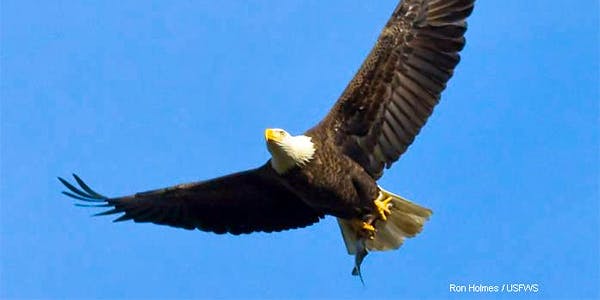Kim Delfino, California Program Director
This year, California has the opportunity to become a leader in the effort to protect wildlife and people from lead poisoning. Assemblymember Anthony Rendon has introduced a bill (AB 711) into the California State Assembly to require the use of non-toxic ammunition when hunting. Because we are committed to protecting native animals in their natural environments, Defenders of Wildlife – along with with our partner organizations – will be working hard to help pass this important bill. If California enacts the law this year, it will be the first state to eliminate the use of lead ammunition for hunting statewide. More than fifty years of scientific research has shown that the presence of lead in the environment poses an ongoing threat to the health of the general public and the viability of the state’s wildlife, including federally-listed endangered and threatened species such as the California condor, and our national symbol, the bald eagle. The time is long overdue to protect people and wildlife from this toxic threat.

Golden eagle
You don’t have to look very far from Sacramento – where this bill was introduced and will be voted on — to see the urgency behind the effort to get lead ammunition out of the environment. Just last week, a bald eagle died from lead poisoning at the California Raptor Center at the University of California at Davis. The bird was rescued from a creek bed in Tehama County after it was found blind and listless, unable to take care of itself or its nest. This is nesting season in California, and the eagle was likely out looking for food to feed its mate. With the death of this eagle, its mate will have to leave the nest to find food, greatly increasing the odds that the nest will fail.
The very same week, a golden eagle suffering from lead poisoning was picked up at a reservoir near Maxwell in Colusa County. She was found on her belly, pulling herself along the hillside using her wings, with her useless legs dragging behind her. She is currently receiving very expensive treatment at the Bird and Pet Clinic in Roseville, California. It is very likely that both birds were poisoned from eating carcasses left over from hunters using lead ammunition, and these are just two examples of an issue that has plagued wildlife for decades throughout the state and across the country.
Lead isn’t only a threat to wildlife. It also puts humans in danger. California Assemblymember Richard Pan is a co-author of AB 711, and as a pediatrician and chairman of the Assembly Committee on Health, he understands the effects that eating game shot with lead ammunition can have on people. As a potent neurotoxin, there is no safe exposure level to lead for humans. The U.S. Environmental Protection Agency defines lead as toxic, stating that it can affect almost every organ and system in the human body, including the heart, bones, intestines, kidneys and reproductive and nervous systems. It is also extremely toxic to children, causing potentially permanent learning and behavioral disorders.
The requirement in AB 711 to eliminate the use of lead ammunition in hunting is the next step in a long effort by environmental and public health organizations to eliminate lead in its many forms from our environment. This bill would protect both people and wildlife by requiring the use of non-toxic – meaning non-lead —ammunition when hunting. This rule would be phased in over a two-year period in order to give hunters and sporting goods stores time to make the switch. Thankfully, non-toxic, non-lead ammunition is readily available and affordable, which will make the transition even easier.

A California condor flies over Bitter Creek National Wildlife Refuge (c)USFWS
In 1991, the U.S. Fish and Wildlife Service required the use of non-toxic shot for waterfowl hunting and, in 2007, the California Legislature required the same for big-game hunting within California condor territory. After these restrictions on the use of lead ammunition went into effect, hunting continued to thrive instead of disappearing as some critics had argued would happen. Indeed, we have seen an increase in the availability of non-toxic ammunition, which has been found to perform as well as, or better than, lead-based ammunition (click here for a video demonstration). Unfortunately, current restrictions on lead ammunition, while benefiting waterfowl and condors, are limited in geographic scope and to the hunting of specific species, which leaves most other wildlife vulnerable to this toxic metal. More protections are needed, and needed now.
In April, the Assembly Water, Parks and Wildlife Committee will vote on this important bill. Defenders – along with Audubon California, the Humane Society of the United States and Physicians for Social Responsibility – will be heading up the effort to pass AB 711 and protect California’s wildlife from the deadly effects of lead poisoning. As the vote gets closer, we will keep you informed about this bill’s progress and, for our members in California, the opportunities for you to weigh in with your state legislators. Working together, we can get the lead out of California.



